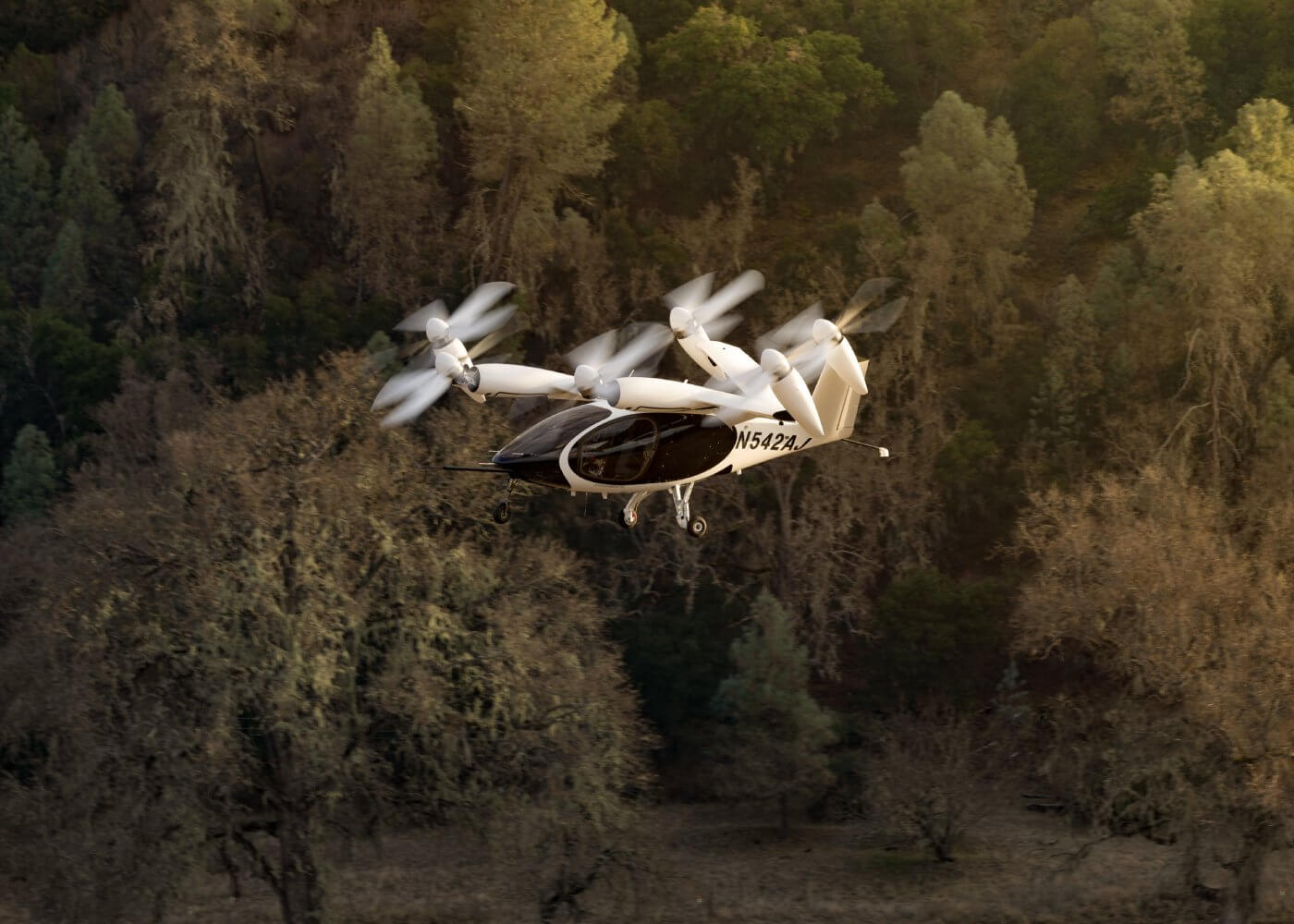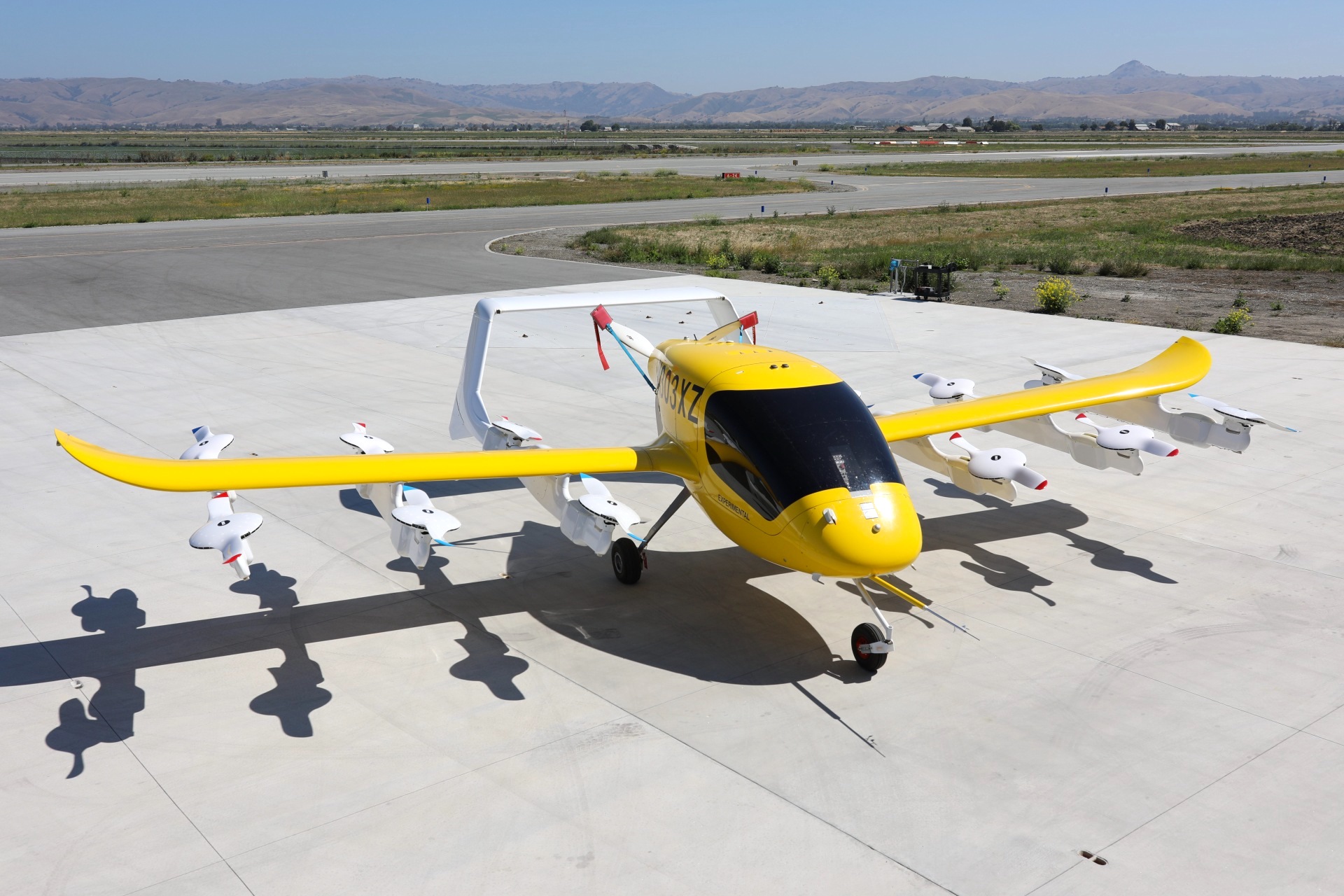For all their revolutionary design concepts, green energy propulsion, and reimagined regional air travel solutions, advanced air mobility (AAM) aircraft must address and mitigate community noise perceptions to achieve their full potential.

Identified in NASA’s Aeronautics Research Mission Directorate Strategic Implementation Plan as a major obstacle to AAM implementation, noise has remained a focus of regulators, designers, manufacturers, academia, and government research for more than a decade of AAM development. To remove this obstacle, NASA determined AAM vehicles, regardless of number within earshot, must not significantly increase ambient noise pollution in both noise level and noise frequency.
NASA’s Advanced Air Mobility project initiated the AAM National Campaign recently to directly address noise and community perception. The campaign is a partnership effort with industry to promote public confidence in and acceptance of emerging AAM aircraft and infrastructure. A significant part of this campaign is acoustic research in this fledgling field where noise measurements on full-scale aircraft had yet to be obtained.
Gathering this initial noise data would provide multiple benefits for the AAM community on a whole. First it would give NASA’s acoustics engineers the opportunity to determine the best methods to accurately capture acoustic data from these new aircraft designs. Second, it would provide baseline noise information for AAM. Finally, it would help inform future AAM development, regulation, aircraft and infrastructure design, and hopefully demonstrate to communities that AAM aircraft do not significantly increase noise pollution.
In September 2021, NASA conducted its first acoustic flight test on an eVTOL aircraft. The agency worked with Joby Aviation to capture noise profile data from the manufacturer’s full-size electric pre-production prototype aircraft. During two weeks at Joby’s Electric Flight Base near Big Sur, California, NASA engineers recorded sound and pressure readings from multiple flight configurations, airspeeds, and altitudes. The aircraft was remotely operated for the test and loaded to near its maximum gross weight to simulate a pilot and four passengers on board.
NASA and Joby released preliminary results in May, which Joby heralded as confirmation of its own predicted low noise targets. The aircraft registered the equivalent of 45.2 A-weighted decibels (dBA) from an altitude of 1,640 feet (500 meters) and at a speed of 100 knots, a reading that Joby said is barely perceptible against a city’s ambient environment.
NASA engineers confirmed Joby’s cruise profile was the quietest mode of all its flight profiles. The acoustic profile of the aircraft during take-off and landing was below 65 dBA at a distance of 330 ft (100 m) from the flight path. Landing configuration was the loudest of the profiles, still weighing in below 65 dBA at 330 ft (100 m), a distance consistent with typical community proximity to the aircraft, according to NASA. A 65 dBA sound level is consistent with that of a normal conversation or a bustling business office. By comparison, a vacuum cleaner is typically about 75 dBA.
“Since the very beginning we’ve known that the key to connecting communities is to operate closer and in a way that’s friendly and fosters community acceptance. Noise is a huge part of that,” said Eric Allison, head of product at Joby Aviation. “It was a real honor to be part of the first research on AAM noise testing. NASA has great technologies and equipment, and the ability to do this type of data gathering in a way that is very credible [is great]. They built models to help us both validate what our own internal models have predicted that our noise signature would be, and allow us to use those models to simulate noise in other environments in ways that are not easy to do right now.”
Pioneering a new acoustic flight test
NASA published Acoustic Flight Test of the Joby Aviation Advanced Air Mobility Prototype Vehicle, a technical paper on the acoustic test, in June — shortly after it was presented at the 28th AIAA/CEAS Aeroacoustics Conference in Southampton, U.K. The paper details the methods used to gather and analyze data from the flight test, as well as the results. The paper also emphasized that a major objective of the test was to develop an initial understanding of AAM noise levels that may be present during near-vertiport operations, as these phases of flight have the highest potential to impact adjacent communities.
Utilizing its Mobile Acoustics Facility to gather the data, NASA used a 58-channel distributed microphone array spanning a ground area of approximately 2,300 ft by 1,000 ft parallel and perpendicular to the main flight paths, respectively, to acquire measurements on more than 100 test points in 31 unique conditions.
The gathered data was then post-processed to represent near vertiport noise levels. The processing took into account the vehicle’s position and state data (ground elevation changes, wind direction and speed, as well as unassociated sounds such as birds and transient aircraft) to form ground noise contours of departures and approaches at various flight path angles and accelerations. The engineers also created directivity maps for constant airspeed level flyover with examples comparing the differences between semi-thrust borne and full-wing borne modes. Finally, the engineers recorded the aircraft in hover profiles, placing microphones around the aircraft.
“Essentially, we were able to get noise levels as a function of emission angle, so if you’re on the right side of the vehicle, here is how loud it is, [and] here is what it sounds like from the front, etc.,” said Kyle Pascioni, research aerospace engineer and acoustics lead of NASA’s AAM National Campaign and also the lead author of the technical paper. “We can then scale those to any observer distance or vehicle altitude we want.”
While the engineers had not captured this data from an eVTOL before, they approached the project with conventional rotorcraft noise measurement procedures then processed the data a little differently.
“We actually were able to get preliminary measurements of the Joby vehicle prior to the full test, which was extremely helpful in understanding how large of an array we needed for instance. One of the main things we were focused on was the process to ensuring the data quality and ensuring that you’re getting an appropriate signal-to-noise ratio,” Pascioni said. “At the same time, it was also a guess prior to all this. Not a lot of people have heard what a Joby vehicle sounds like. Some characteristics of the vehicle’s sounds are quite different. Obviously, for helicopters, you get that impulsive sound due to the main rotor blades, or for airplanes, the propeller sound. For this vehicle, their propellers are rotating at slower rates. You don’t hear that characteristic rotor or propeller sound. It was much more benign. We talk about tonal content and broadband content of a sound in acoustics. Joby’s vehicle was much more broadband, with broadband being like white noise.”
This finding ended up being a real positive for future AAM acceptance, Pascioni said. He explained there are several aspects to an actual noise level. Decibels are certainly one, but almost more important from a community perspective is tonal content. While the Joby aircraft created 65 dBA on approach, the benign nature of the sound, as opposed to the sound of rotors or whine of a drone, can be perceived as less annoying to those on the ground.
“A drone and the Joby aircraft could be creating the same level of sound, but someone could be much more annoyed with the drone,” he explained. “That tonal aspect is important in this test and we highlight a few acoustic spectra that show sound levels as a function of frequency in the paper. The Joby vehicle tends to fall into those levels that are more acceptable as it sounds more like white noise as opposed to a distinct sound that gets people’s attention and is perceived as ‘annoying.’”
NASA engineers were also able to prove repeatability in their noise data, as long as the vehicle state remained the same in every attempt. That is, through multiple readings from the same flight profile repeated over and over again, many readings came in within 1 to 2 dBA of each other.
“This test certainly helped us get a better understanding of how many conditions we need to repeat to be confident in what we’re measuring and get a better handle on what the acoustic variability might be in repeatability,” Pascioni said.

Moving forward
Joby operates only one of the three main AAM designs in development today. While Joby operates a vectored thrust configured aircraft, the other designs are lift-plus-cruise and a wingless multicopter. NASA is working with manufacturers of these designs to gather acoustic data in similar flight tests with the goal of compiling comprehensive data on all main AAM designs.
Wisk Aero, with its autonomous all-electric 12-fan vertical lift design and a rear-mounted push propeller for forward flight, is on NASA’s list of future tests, giving the agency the opportunity to compare and contrast noise profiles between vectored thrust and lift-plus-cruise configurations. A timeframe has not yet been identified for that test.
What’s more, NASA is working closely with the U.S. Federal Aviation Administration (FAA) and other partners to share testing data, research, and knowledge to help inform next steps in AAM development and work to maintain the lowest noise profile possible to maximize public acceptance.
For instance, one conclusion of the Joby test revealed metrics were not duration based. It also highlighted the area of the most variation was the last 10% of an approach, indicating a potential for low-noise optimization of near-vertiport operations. The paper suggests developing procedures such as performing the transition from VTOL to wing-borne flight in a quicker manner could aid in reducing noise. It also suggests if noise sensitivity to flight conditions (or vehicle state) is known, flight profiles could be designed to minimize noise emissions. It compares this reasoning with successful noise improvements made with conventional rotorcraft using general guidelines on how to “fly neighborly” based on a vehicle’s operational envelope.
“This was a very successful first acoustic flight test,” Pascioni said. “In addition to industry and government, we hope these measurements are going to be extremely useful internally for NASA. We have a lot of tool development for these vehicles to predict the noise given a geometry or an operating state. Lending information or the measurements that we have to those folks to update their tools is something we hope to do in the future.”





I don’t want our skies filled with rotorcraft! Let’s keep things simple.